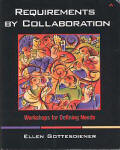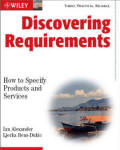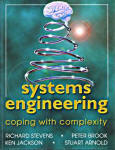Buy it from Amazon.co.uk
The thesis of this thought-provoking book is that systems never occur in a vacuum. A system goes into an existing business and has an effect on the people and processes there. All too often that effect is practically entirely negative: people are deskilled, structures are destroyed, jobs are lost. But it is possible to design for people as well as for technology. Professor Mumford also brings a feminine perspective to her work:
"(In the 1960s) some new and unpleasant female jobs appeared on the scene. One was punch operating. Large numbers of women were required to punch the cards or paper tape that provided input to the new computers. This job, while extremely boring, required considerable accuracy and so provided a new manifestation of a job hardly fit for humans."
This combination of a quiet, factual style with an acerbic wit, revealing a polemic intent, characterises the book. The reader hardly notices that the argument is rather different from conventional wisdom.
After the historical introduction, the focus moves on to how to design systems in a rapidly-changing and unstable world. Mumford makes plain the evolutionary aspect of this: if you introduce a system which improves business efficiency, it eliminates less effective systems. A purely Darwinian outcome might be a ruthless and progressive focus on efficiency, but even the biologist Richard Dawkins "recognizes that there is a logical difficulty in this explanation .. man has a capacity for altruism. Man can see and understand long-term interests, which genes .. cannot."
In a sense, the rest of the book is a discussion (with plenty of personal experience) of how the apparent inevitability of ever-increasing business ruthlessness can be side-stepped, by applying reasoned forethought to system design. "Ethical principles are particularly difficult to develop and apply when times are hard", as Mumford concisely observes.
There may be sound economic reasons for behaving ethically: for example, in Britain, which now has the longest working hours in Europe, "those who retain their jobs seem to be working much longer hours to make up for staff reductions. .. This, despite its consequences for morale, is called achieving greater efficiency." It may be better for business not to work key employees into early graves.
A recurrent theme is socio-technical design, which began back in 1946 with the work of the Tavistock Institute. They "believed in trying to optimize both the technical and the social aspects of a work system" but were unable to make headway against the then current Taylorian ideal of mass-production. But by the 1980s their ideas had successfully influenced the "German humanization of work programme and the quality of life legislation of Norway and Sweden", Mumford notes approvingly.
The book ends by introducing two methods: Mumford's own ETHICS (Effective Technical and Human Implementation of Computer Systems), and an exercise in socio-technical design, basically a worked example in the form of a case study "based on a real company".
The reader may feel that no matter how sensitively new systems are designed for their users, havoc is still inevitable: notice the plummeting workforces of banks and telephone companies. The enemy "has always been the belief that efficiency should be the dominant work value, and .. is best achieved through fractionated work and tight control systems." Hopefully, says Mumford, "we have now passed this stage and the versatile computer is being used to enhance, not degrade, skills." Well, we hope so.
This book will be of especial interest to designers of systems that will affect how people work, and to thoughtful software engineers everywhere.
© Ian Alexander 1996
You may also like:
 Enid Mumford,
Enid Mumford,






